Hunan, abbreviated as “Xiang,” is located in south-central China, along the middle reaches of the Yangtze River. It’s one of the core provinces in the Yangtze River Economic Belt. The capital city, Changsha, blends a rich historical legacy with modern urban life. Other cities like Yueyang, Hengyang, and Zhangjiajie each offer something unique, making Hunan a popular destination in central China.
The landscape of Hunan is largely mountainous and hilly, filled with natural beauty and cultural landmarks. With major rivers such as the Xiang and Yuan Rivers, and iconic attractions like Zhangjiajie and Mount Heng, the province is ideal for both cultural travel and nature-based adventures.
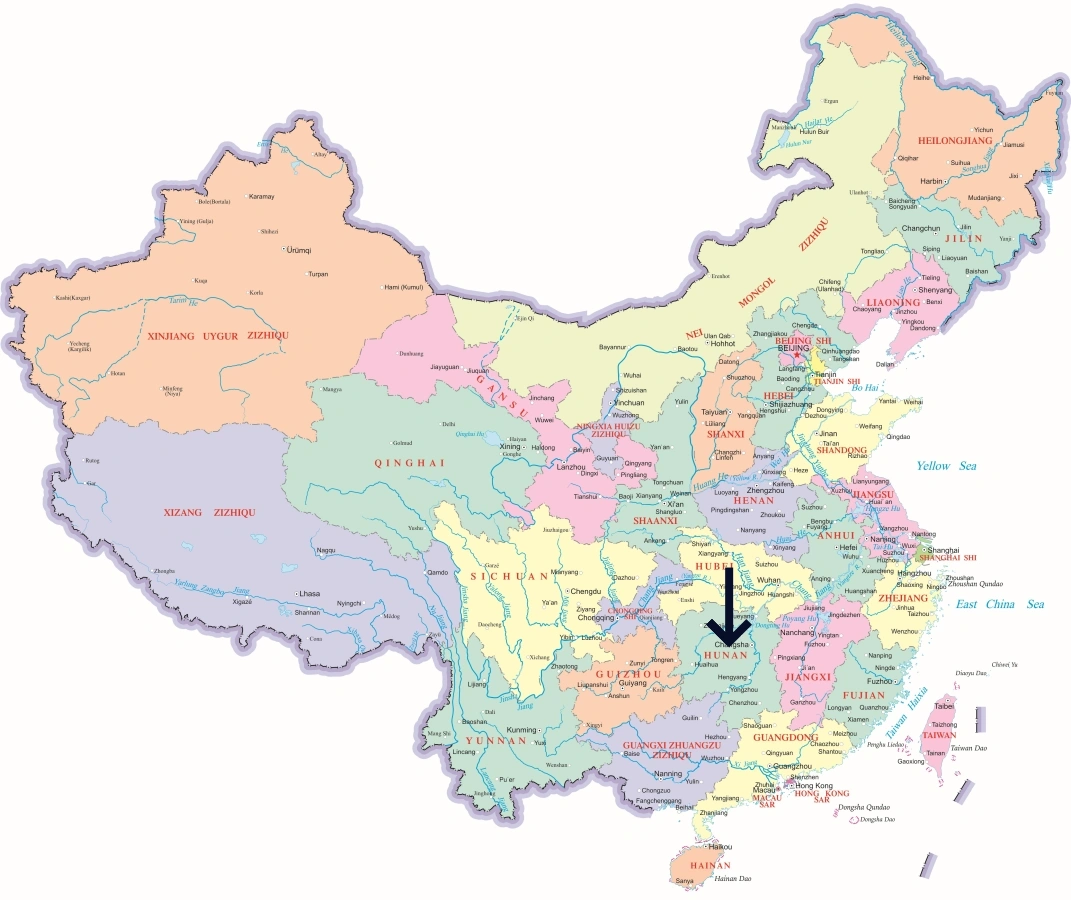
Hunan has 13 prefecture-level cities and 1 autonomous prefecture. Each region offers distinct charm, from modern cities to ethnic towns and natural wonders. Whether you want to explore ancient architecture, hike scenic mountains, or immerse yourself in local traditions, Hunan has something for everyone.
The most visited cities are Changsha, Zhangjiajie, Hengyang, Yueyang, and Changde. However, lesser-known places like Zhuzhou, Xiangtan, Chenzhou, Huaihua, Yongzhou, Loudi, Yiyang, Shaoyang, and the Xiangxi Tujia and Miao Autonomous Prefecture are also rich in culture and well worth your time.
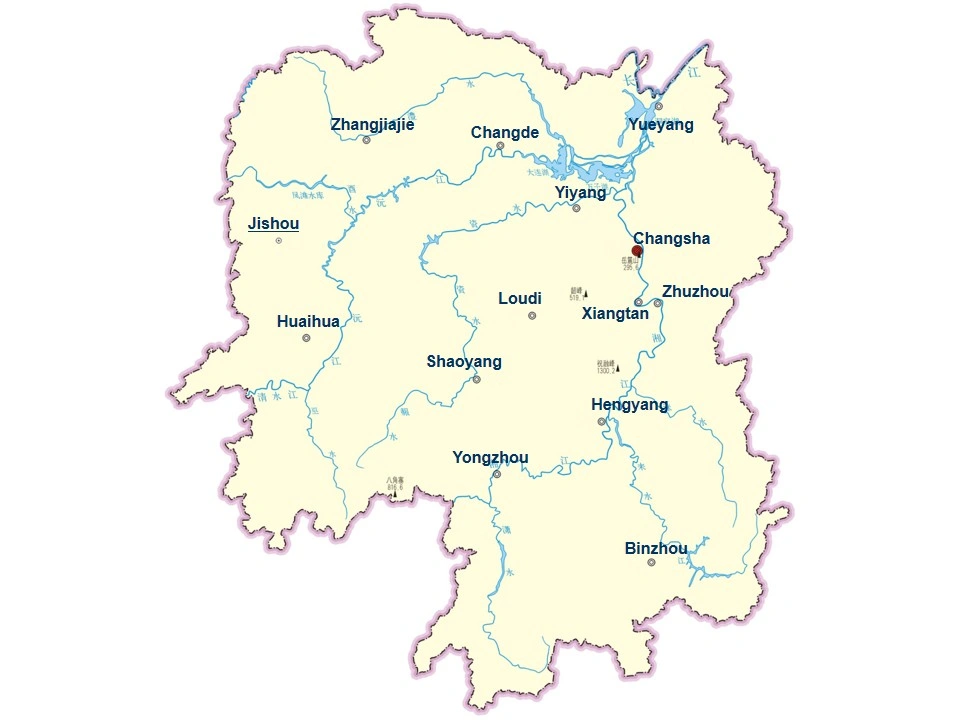
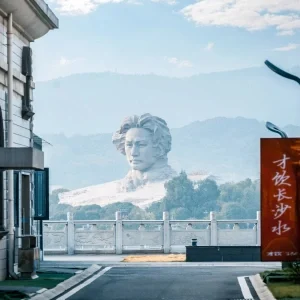
The capital of Hunan is a cultural hub known for Orange Isle, Yuelu Mountain, IFS skyscraper views, and an unbeatable nightlife and food scene.
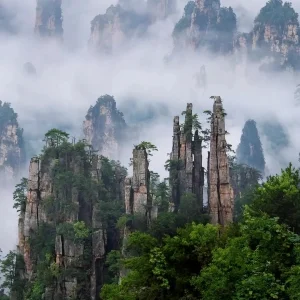
Famous for its surreal sandstone peaks, this UNESCO-listed site inspired the floating mountains in Avatar. Home to the Wulingyuan Scenic Area and thrilling glass skywalks.
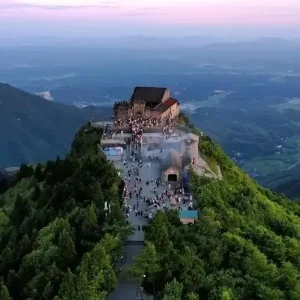
Mount Heng (Hengshan), one of China’s Five Great Mountains, draws pilgrims and hikers alike. The city itself is also a major historic and transport center in southern Hunan.
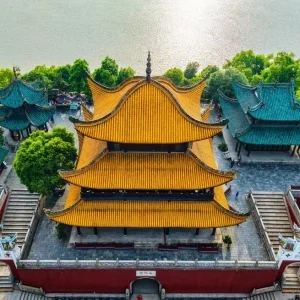
Sitting on the banks of Dongting Lake, Yueyang is best known for the Yueyang Tower—immortalized in Chinese literature and offering panoramic lake views.
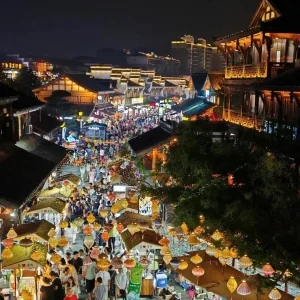
A balance of history and leisure, Changde features the poetic Taohuayuan (Peach Blossom Land) and relaxing lakeside spots like Liuye Lake, ideal for families.
Hunan offers a perfect mix of natural beauty and cultural depth. From rugged mountains to ancient towns, from religious landmarks to minority villages, it’s a must-visit for travelers seeking more than just mainstream sightseeing.
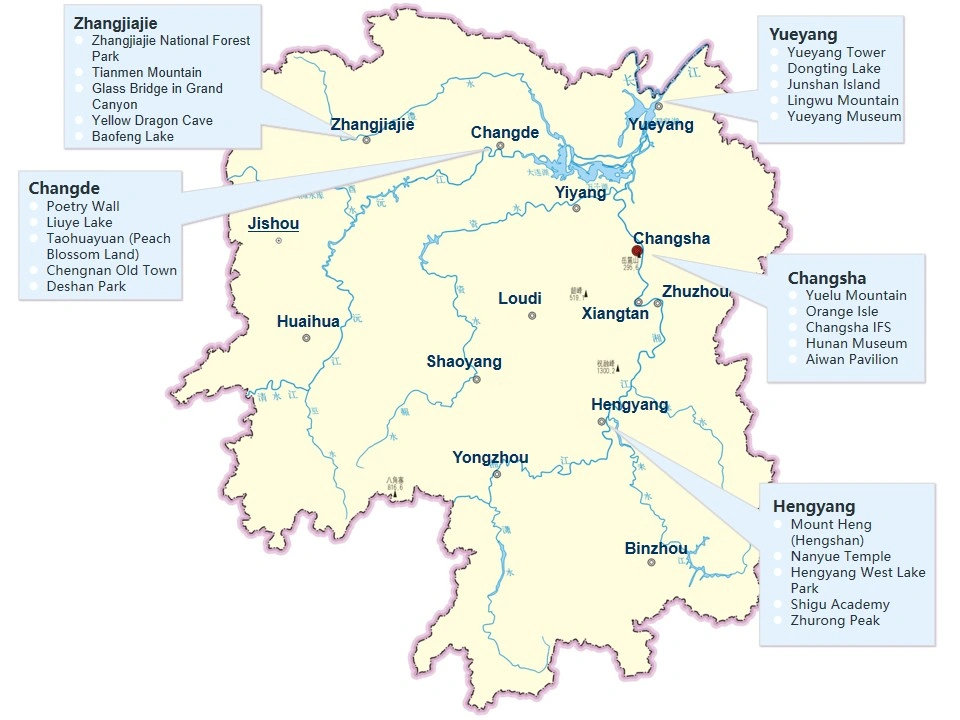
-300x300.webp)
Known for towering sandstone pillars, this is one of China’s most photographed natural areas. It's where the Hallelujah Mountains in Avatar were filmed.
-300x300.webp)
A scenic island in the middle of the Xiang River, ideal year-round. Spring flowers, fall foliage, and historical links to Mao Zedong make it especially memorable.
-300x300.webp)
A literary and architectural icon, this ancient tower overlooks Dongting Lake and is famed for the saying: “Worry before the people, enjoy after them.”
-300x300.webp)
One of China’s sacred mountains, this site offers a spiritual hiking experience with ancient temples and breathtaking ridgelines.
-300x300.webp)
A romantic riverside town with stilt houses, old bridges, and ethnic charm. It’s ideal for walking, photography, and experiencing Miao minority culture.
-300x300.webp)
A dreamy countryside destination said to resemble the utopia described by poet Tao Yuanming—serene, green, and perfect for slow travel.
Hunan Cuisine, or Xiang Cuisine, ranks among China’s Eight Culinary Traditions. Known for its intense flavors, bold spiciness, and colorful presentation, it relies heavily on chili, smoked meats, and fermented ingredients. Locals love heat, and nearly every dish features fresh or pickled peppers.
Compared to the mild flavors of Jiangsu cuisine, Hunan food brings the fire—literally. If you enjoy bold, spicy meals, this is your paradise.
-300x300.webp)
A signature Hunan dish. Steamed fish head is covered in layers of red chili, delivering intense flavor and tender texture.
-300x300.webp)
Night markets in Changsha come alive in summer with platters of spicy crayfish and icy local beer. It’s a must-try evening feast.
-300x300.webp)
Crispy on the outside, soft inside, and deliciously funky, this street snack may smell strong—but the taste wins hearts.
-300x300.webp)
A rich and spicy dish where duck and fresh duck blood are stewed together. It’s a bold taste of southern Hunan tradition.
-300x300.webp)
Known as “Tan Zi Cai,” these dishes are fermented in clay jars—sour, savory, and great with rice.
-300x300.webp)
Made from mung beans, these slippery cold noodles are seasoned with vinegar and chili oil—perfect for hot summer days.
Hunan covers approximately 211,800 square kilometers and has a population of around 66 million (2023). Here’s a breakdown by city:
Hunan has a humid subtropical climate with distinct seasons and abundant rainfall. Here’s a month-by-month weather guide:
Best months to visit Hunan: April–May (spring), September–November (fall).
Below are the main postal and phone codes for major cities in Hunan:
